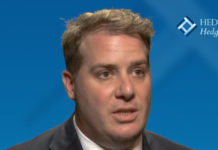Wells Fargo’s woes continue as the company is embroiled in the latest round of scandal. The bank is now under investigation from the U.S. Department of Justice for mismanagement and malpractice in the wealth management division. The investigation follows earlier sanctions by the The Federal Reserve over a fake-accounts scandal.
According to reports from a whistleblower detailed in the Wall Street Journal, the company pushed employees in the wealth unit to sell products to clients that increased the bank’s revenues. Current and former employees told the Wall Street Journal that they purposefully invested client assets to earn higher fees for the bank. Financial advisors encouraged clients to move assets between certificate deposits and structured note or put money into Wells Fargo owned alternative-investment funds.
Once America’s most profitable banks, Wells Fargo has taken a major hit in the past few years as the company’s malpractices have gone public. According to fortune magazine, the bank had 40 percent fewer checking accounts applications, 43 less credit card applications and a 14 percent overall drop in profits. The company also announced it will close 400 branches across the United States.
Regulatory agencies slapped Wells Fargo with $185 million in penalties for the fraud. The Federal Reserve also imposed caps on the bank’s balance sheet and sent letters to the company’s leadership, condemning leadership for mishandling the matter.
The Wall Street Journal said some Wells Fargo advisors earned bonuses of 15 percent or more and some advisors “used loopholes to reach the lofty — and in some cases unattainable — goals, [and] Wells Fargo had to pay out more than $750 million between 2012 and 2015.”
The bank’s wealth management unit is relatively small compared to other divisions within the bank, but the Wall Street Journal said the latest scandal is emblematic of deeper problems within the company. “The investigations show the difficulties Wells Fargo is facing as it tries to put its sales-practices problems behind it,” the Wall Street Journal said. The concerns cited with the bank’s wealth-management division also highlight how pervasive issues at Wells Fargo have become.”
According to Wells Fargo’s most recent annual report filed to the SEC, the company is conducting its own internal investigation alongside official probes.
“A review of certain activities within Wealth and Investment Management (WIM) being conducted by the Board, in response to inquiries from federal government agencies, is assessing whether there have been inappropriate referrals or recommendations, including with respect to rollovers for 401(k) plan participants, certain alternative investments, or referrals of brokerage customers to the Company’s investment and fiduciary services business. The review is in its preliminary stages.”
Wells Fargo launched a series of reforms during the scandal to review sales practices and configure leadership. They hired new executives, board members and CEO and reworked their risk management system. The bank also and reimbursed customers who lost money from the scandal.
“Our priority of rebuilding trust has included numerous actions focused on identifying potential financial harm and customer remediation. The Board and management are conducting company-wide reviews of sales practices issues. These reviews are ongoing,” the report said. “We are providing customer remediation based on the expanded account analysis.”
As Wells Fargo struggles to rebuild its reputation, smaller firms work to ensure clients that not all wealth management is dangerous. Wealth management involves individualized investment portfolios to suit a client’s financial needs. Wealth managers help clients diversify their portfolios and find investment opportunities clients might not find on their own.
Professional wealth management may provide investors access to investments they may not have otherwise, including a wide variety of traditional and alternative investment classes. One such firm is Wealth Solutions, a wealth management firm based out of Austin, Texas. Wealth Solutions was founded by Richard Dwayne Blair in 1994 with the goal of providing personalized, professional advice to clients. The firm works with individuals, families and small business owners to manage wealth and invest assets.
Blair has worked in the financial services industry for over 20 years an independent financial advisor, a Certified Annuity Specialist, a Certified Estate and Trust Specialist, a Certified Fund Specialist, a Certified Income Specialist, a Certified Tax Specialist and a Retirement Income Certified Professional.
Blair graduated from the University of Houston and quickly realized his aptitude for financial planning. He entered the financial services industry in 1993 with the goal of teaching others how to manage their assets and investments. His finance background laid the groundwork for his independent practice and reputation for savvy financial management. He now acts as a Chief Investment Officer for his clients to help them learn how to feel confident investing in certain markets while avoiding risk.
Blair also specializes in retirement planning to help clients transition into the next phase of their lives. He works closely with individuals to plan for a fixed income life to avoid over spending.
According to Forbes Magazine, the benefits of wealth management are multifaceted and understanding how wealth managers work can be hugely beneficial for clients. “Wealth managers are actively involved in their client’s retirement planning. This can mean, among other things, updating and changing your client’s investment profile based on where they are in their life cycle, with older customers being moved into more stable investments,” the magazine said.
“While asset allocation is a fairly basic concept in any sort of financial planning, wealth managers also coordinate clients with accountants and attorneys. In addition, they help with trust planning, insurance requirements and managing clients’ risks.”
Wealth management entails coordinating a team of experts to act as consultants on a client’s case. Wealth Solutions deals with specific examples like clients who are parents or grandparents may want to plan for future college funding while still saving for retirement. Through experienced gained working in the industry, Blair helps these clients determine plan for both by setting up educational plan and coordinating retirement income.
Financial managers aim to tailor portfolios of investments based on the customer, which can only be done through investing in the customer’s success over time. Advisors and institutions thoroughly research the market over time to help clients decide whether to opt for individual bonds, equities, funds or structured products.
Forbes makes a distinction between wealth managers and investment advisors by describing how much interaction wealth managers have with their clients. “Wealth managers can deliver so many products and services because they have cultivated a relationship whereby any of them may be appropriate at a given moment. They have a richer understanding of each client’s personal and financial life that gives them more options to choose from.”
“For a wealth manager, each product and service has to be put in the context of the client’s overall financial plan. The prime focus is the interplay of products and services and the way they can be integrated to address a client’s complete financial equation over the course of a long and mutually beneficial relationship.”
With this in mind, Blair follows three pillars in his approach to helping clients achieve their goals as described on Wealth Solutions website:
The First Pillar
The first Pillar is designed to lay out the client’s financial roadmap by determining the route by identifying the client’s goals, strengths, risk tolerance, and opportunities for growth. This financial planning phase is designed to help Richard build a strong and lasting relationship with his clients and gain a deeper understanding of the client’s individual goals and concerns, and establish clear expectations.
The Second Pillar
The second Pillar is designed to develop an effective, long-term investment strategy that is custom tailored to the client’s unique goals and liquidity needs. Richard actively manages and allocates assets to help capture maximum performance during periods of upward market movement, while minimizing the impact that negative market periods have on clients’ portfolios. Performance is tracked and compared to the clients or company’s expectations, individual and model goals, and historical data.
The Third Pillar
Once Richard has established a client’s financial goals and enacted strategies to provide adequate liquidity and growth; he’ll then review with clients the final Pillar – insurance needs. Everyone on this journey of life knows that you can’t always predict when the storms will hit, but we can prepare for it with adequate coverage. Blair can help his clients plan for these events with life insurance, long-term care insurance, and annuities.
Working as an independent advisor, consultants like Blair have greater freedom to choose from a wide range of services and products to offer clients, avoiding some of the pressures put on advisors at bigger firms.
Wells Fargo is patching up its tattered reputation and the blow it dealt to the reputation of financial management more broadly.
“At Wells Fargo Wealth and Investment Management, we are committed to taking care of our clients’ financial needs every day and take seriously our responsibility to help them preserve and invest their hard-earned savings,” the bank said in a statement. “Our primary goal is to be a trusted advisor to our clients and to act in their best interest. We have supervisory processes and controls in place; if a team member were to act in a manner not in line with our values and our policies, we would take appropriate action.”
Meanwhile, smaller firms like Wealth Solutions are hoping their work will nip those fears in the bud by showing how advisors who care about their clients can get the job done the right way.






